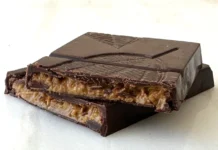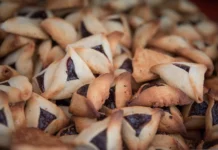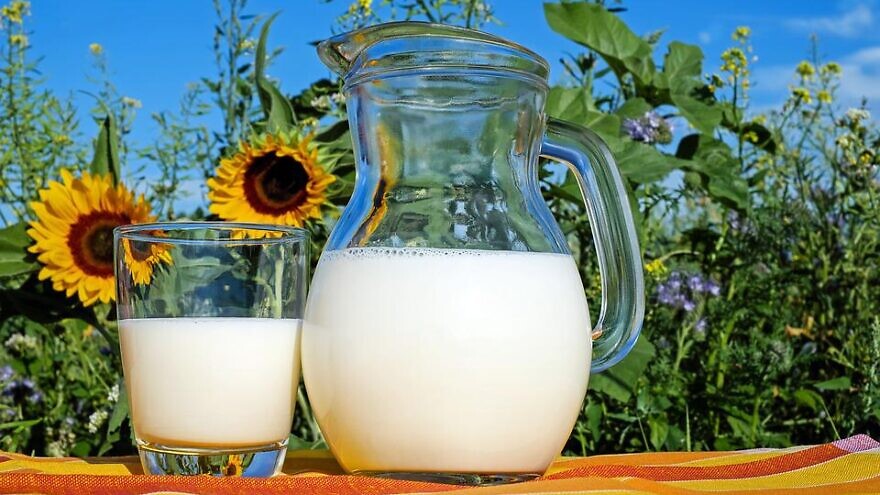It was a typical one-hour flight from Edinburgh to Shetland; tea and biscuits (cookies) were served by a smiling tartan-clad stewardess. My heart flipped as the little Saab plane bumped over the landing strip. Ocean waves lapped up almost to the edges of the runway. As I clung to the rail of a rickety stairway to descend onto the tarmac, I inhaled the familiar salty air deep into my lungs.
This was Sumburgh Airport, Shetland—the most northerly commercial airport in the United Kingdom. Although I’ve spent a lifetime in the United States, this is still home.
I landed, curious. How were these remote islands coping with the deadly pandemic? The population hovering at 23,000 did not escape COVID-19, though they fared much better than most in the beginning. As my 70’ish friend Jean Anne described it: “Being here saved my sanity; I could be out in the fresh air. Even in winter, I could go out walking, take my dog out, and two or three of us, observing social distance, would take a swim every day in the ocean.” (OK, I did give her a look and a shudder when she added: “No sweatsuits and 8 degrees Celsius, warmed by the Gulf Stream.”)
While respectful of those with autoimmune systems, Shetlanders are seemingly nonchalant about being out and about right now. “Almost everyone is vaccinated; after all, it’s not going to kill you,” they say.
With restrictions lifted at the end of April, hundreds of locals mingled with American and overseas visitors for the Folk Festival, a prestigious weekend event showcasing the best international, British and Shetland music. Organized by an enormous group of volunteers, they shuttled between venues. “It’s crazy, but it works,” voiced an enthusiastic group of teenagers. This is typical of people coming together—Shetlanders, newcomers, oil-rig workers, young and old all pulling together for a common cause. All year long there are events such as fundraising Sunday teas, where volunteers of all ages bake and serve; Shanty Songs, a group to support Alzheimer’s caregivers, or on a recent weekend, Voar Redd Up (dialect meaning “spring cleanup”). About 4,500 volunteers—or 20% of the population—clear beaches, coastlines and roadsides of litter and debris washed up by winter storms.
I’m grateful for having grown up Jewish on this remote island. I learned the value of respect and caring within a Christian community—one where extended family included “Granny Hunter, Auntie Joanne, Uncle Johnny,” and playmates who became close as cousins. My parents who assimilated socially made sure I was immersed in my Jewish heritage. Friday morning was abuzz with cooking and cleaning, newspapers spread on the scrubbed kitchen floor, tall brass candlesticks polished to light on Shabbat and always a chicken simmering in a pot ready for kneidlach (matzah balls) to be dropped in.
For my mother, cooking for Shavuot was easy. Even during the starkness of World War II, there were plenty of fresh local dairy ingredients—eggs, butter, cheeses, milk and cream—all delivered daily to our front door. In fact, many of our weekday, dairy dishes, like baked rice puddings and fish pies, fit right in with Shavuot, the holiday that commemorates the giving of the Torah to the Jewish people on Mount Sinai more than 3,300 years ago.
Shavuot begins this year on the evening of June 4, the fifth of Sivan, right after Shabbat. It’s customary to serve dairy meals during the two-day festival (one day in Israel). Some scholars claim that spring harvest festivals usually feature dairy dishes because cheese was produced during this season. Others take the practice directly from scripture saying we eat dairy to symbolize the “land flowing with milk and honey.”
During visits to longtime friends, besides laughter and memories, I brought back ideas and recipes, perfect to serve during Shavuot. Salmon and Haddock Pie was on the table in less than half an hour, using chunks of ocean-fresh fish in a milk gravy studded with green peas and a mashed-potato crust. Creamed mushrooms on slabs of homemade bread served as a late supper—the perfect way to finish leftover Shabbat challah. Boiled Fruit Loaf, a childhood favorite, is mixed in one pot. Checking my mother’s recipe, I tweaked it to reduce the sugar without sacrificing the rich fruit and spice flavors. In my house, Mondays were laundry days, and creamy rice pudding was the reward at suppertime. The cheesecake recipe, shared by my Florida friend, Terri, is prepared with ricotta cheese rather than cream cheese. It’s a fluffier version of the traditional cake, which is much richer, heavier and, yes, more calorie-laden, though those don’t count at holiday time.
Make one or all, and enjoy!

Menu
Salmon and Haddock Pie
Crofters Noodles
Creamed Mushrooms on Toast
Cucumber and Radish Salad
Boiled Fruit Loaf
Ma’s Stovetop Rice Pudding
Terri’s Ricotta Cheesecake
Salmon and Haddock Pie (Dairy)
Serves 4
Cook’s Tips:
*Substitute any white fish for haddock (cod, for example).
*Nay heat through in microwave.
Ingredients:
1 tablespoon vegetable oil
½ medium onion, thinly sliced
1 rib celery, cut into ¼-inch slices
6 ounces skinless salmon, cut into 1-inch chunks
6-8 ounces haddock, cut into 1-inch chunks
½ teaspoon each salt and fresh ground pepper
1¼ cups milk
1 tablespoon butter or margarine, softened
1 tablespoon all-purpose flour
1 cup green peas
3 cups mashed potatoes
Paprika to sprinkle (optional)
Directions:
Heat the vegetable oil in a large pot over medium heat. Add the onion and celery. Cook 5 minutes or until beginning to soften.
Add the salmon, haddock, salt and pepper. Pour the milk over and stir gently.
Cover and bring to boil. Reduce heat to medium. Cook for 15 minutes, or until the fish begins to flake.
Meanwhile, combine the butter and flour, mixing to a smooth paste. Drop a teaspoon at a time into the simmering liquid, stirring constantly. The mixture will begin to thicken. Stir in the peas.
Cook, simmering, for 4 to 5 minutes. Transfer to an ovenproof casserole. Spoon mashed potatoes over. Heat through in the microwave.
Sprinkle with paprika and serve.
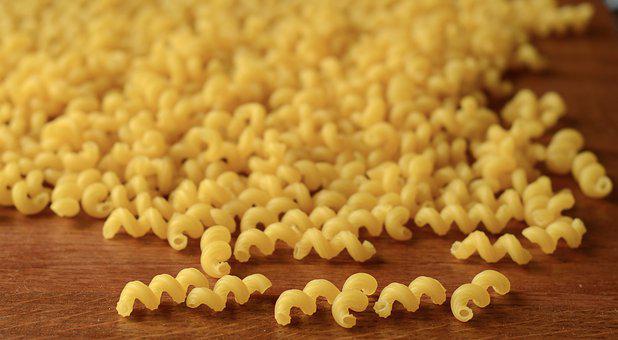
Crofters Noodles (Dairy)
Serves 4-6
Cook’s Tips:
*Any pasta may be used instead of noodles. Kids like macaroni.
*Greens such as lettuce or spinach may be substituted for kale.
Ingredients:
8 ounces noodles, cooked and drained according to package direction
1½ cups small-curd cottage cheese
1 tablespoon olive oil
1 leek, trimmed and thinly sliced
1 cup finely shredded kale
Salt and freshly ground pepper to taste
Directions:
Place the cooked noodles in a large microwave-safe serving dish. Stir in the cottage cheese and set aside.
In a medium skillet, heat olive oil over medium heat. Add the leek and kale. Cook and stir until softened, about 5 minutes. Add to the noodles, stirring lightly.
Season with salt and pepper to taste.
Cover and microwave for 3 or 4 minutes to heat through. Spoon into bowls and serve.
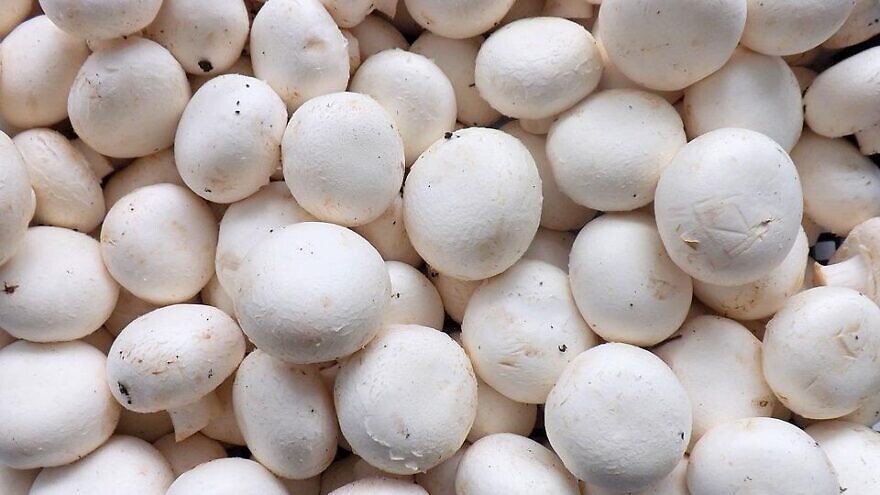
Creamed Mushrooms on Toasted Challah (Dairy)
Serves 4
Cook’s Tips:
*No challah? Toasted Kaiser rolls or thickly sliced bread work just as well.
Ingredients:
2 tablespoons butter or margarine
1 small onion, thinly sliced
1 ½ cups thinly sliced white mushrooms
1 ½ cups sour cream
Freshly ground pepper to taste
4 slices of toasted challah about ½-inch thick
Directions:
In a medium skillet, melt butter over medium heat.
Add the onions and cook until softened. Stir in the mushrooms. Reduce heat. Cover and simmer 5 minutes longer. Remove from heat. Stir in the sour cream.
Season to taste with pepper.
Spoon onto toasted challah and serve at once.
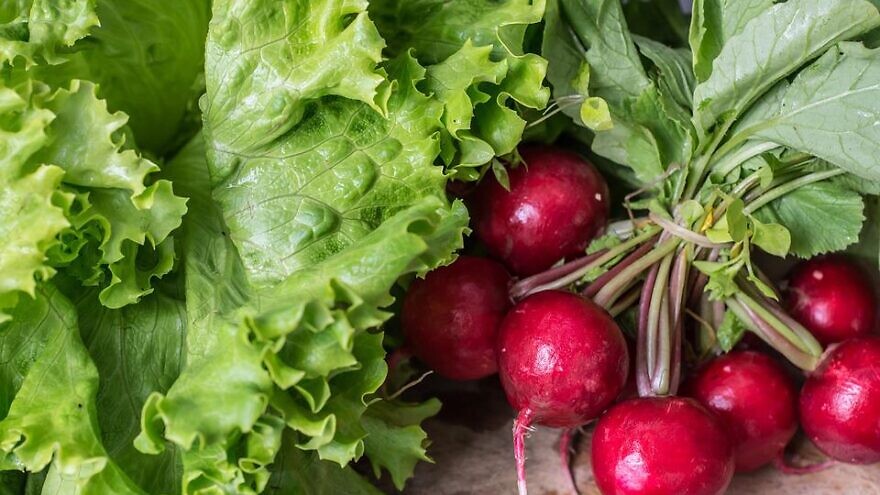
Cucumber and Radish Salad With Lemon Zest (Pareve)
Serves 4-6
Cook’s Tips:
*For a creamy texture and a few more calories, use ½ cup low-fat sour cream and ½ cup plain yogurt.
Ingredients:
1 cup plain yogurt
1 tablespoon lemon zest
1 tablespoon rice vinegar
½ teaspoon freshly ground pepper
2 cucumbers, unpeeled, thinly sliced
1 bunch of red radishes, trimmed and thinly sliced
½ cup golden raisins
Directions:
In a medium bowl, combine the yogurt, lemon zest, vinegar and pepper.
Add the remaining ingredients and toss to mix.
Serve chilled.

Boiled Fruit Loaf (Pareve)
Makes 8-10 slices
Cook’s Tips:
*Use a mixture of any dried fruits such as raisins, currants, dried cranberries and a handful of shredded coconut; whatever you have on hand.
*To make self-rising flour, add 2 teaspoons of baking powder to 1 cup of all-purpose flour.
*Don’t be afraid of substituting favorite spices—pumpkin spice, Chinese Five Spice—but go easy on ground cloves.
Ingredients:
2 cups dried fruits
½ cup sugar
1½ cups milk
2 tablespoons butter
1 teaspoon baking soda
1 egg, lightly beaten
1¾ cups self-rising flour
1 teaspoon cinnamon
½ teaspoon ground nutmeg
Directions:
Preheat oven to 350 degrees. Spray a loaf pan, 9x5x3inches, with nonstick vegetable spray.
In a medium saucepan, combine the dried fruits, sugar, milk, butter and baking soda. Bring to a boil over medium heat, stirring often.
Lower to simmer and cook for 5 minutes or until dark and beginning to be syrupy. Remove from heat. Set aside to cool completely.
After the mixture has cooled, whisk in the egg and spices, then add the flour gradually, ½ cup at a time. Transfer to prepared loaf pan. Bake in preheated oven 45-50 minutes or until a skewer comes out clean when inserted.
Cool, slice and enjoy. Freezes well.

Ma’s Stovetop Rice Pudding (Dairy)
Serves 4-6
Cook’s Tips:
*Best made in a double boiler but may use a heavy-bottomed saucepan, stirring often.
*May use low-fat milk.
*Add ¼ teaspoon orange or vanilla extract.
Ingredients:
½ cup rice
4 cups milk
¼ cup sugar
2 teaspoons unsalted butter
½ cup dark raisins
Directions:
Place all ingredients in a double boiler. Stir to mix.
Cover and cook over the lowest heat for 1½ hours, or until thick and creamy. Stir often.
Check the water in the lower pot of the double boiler, adding more water as needed.
Serve warm or at room temperature.
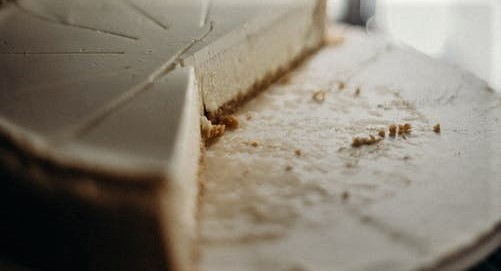
Terri’s Ricotta Cheesecake for a Crowd (Dairy)
Serves 12-16
Cook’s Tips:
*Prepared pie crust may be used to line the pan instead of graham-cracker crumbs.
*Top cheesecake with sugared strawberries or berries before serving.
Ingredients:
⅓ cup graham-cracker crumbs
8 eggs, separated
2 cups sugar
3 pounds of ricotta cheese
½ cup flour, sifted
1 tablespoon finely grated lemon rind
1 teaspoon vanilla
½ cup heavy cream, whipped
Directions:
Preheat oven to 425 degrees.
Spray a 12-inch springform pan with nonstick vegetable spray. Sprinkle graham cracker crumbs over the bottom. Set aside.
In a medium bowl, whisk the egg whites with ½ cup sugar until they peak. Set aside.
In a large bowl, beat ricotta until smooth. Gradually add 1½ cups sugar and the egg yolks, beating well after each addition.
Beat in the flour, lemon rind and vanilla. Fold in the stiffly beaten egg whites and the whipped cream. Turn into the prepared springform pan.
Bake in preheated 425F oven for 10 minutes. Reduce temperature to 330 degrees, and bake for 1 hour.
Turn off the heat. Allow to cool in the oven with the door closed, about 2½ hours.
Ethel G. Hofman is a widely syndicated American Jewish food and travel columnist, author and culinary consultant.

